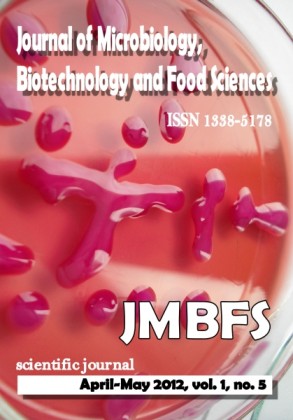ANTIBACTERIAL POTENTIAL OF HONEY FROM DIFFERENT ORIGINS: A COMPARSION WITH MANUKA HONEY
Keywords:
Antibacterial activity, manuka honey, Non-peroxide activity, MRSAAbstract
The antibacterial activity of honey is well documented, this activity is mainly due to its low pH, osmolarity and hydrogen peroxide accumulation. Recently, more attention has been given to the importance of a unique extra antimicrobial activity, termed as a non-peroxide activity. The aim of this work was to investigate the antimicrobial activity of selected honeys from different origins; specifically to evaluate their non-hydrogen peroxide derived activity, against Staphylococcus epidermidis, Bacillus sphaericus, Bacillus subtilis, Serratia marcescens, Escherichia coli and S. epidermidis; manuka honey was used as the control. Antibacterial activity of the honeys was assayed using standard well diffusion methods. noticeable variations in the antibacterial activity of the different honey samples were observed. Most of tested honeys had broad-spectrum antibacterial activity, particularly Greek Pine, Scottish Heather, Chilean Ulmo, New Zealand Beech and Jarrah Honey. Unfortunately, none of the tested honey had a detectable non-peroxide activity.Downloads
Download data is not yet available.
Downloads
Published
2012-04-01
How to Cite
Alnaimat, S., & Wainwright and Khalid Al’Abri, M. (2012). ANTIBACTERIAL POTENTIAL OF HONEY FROM DIFFERENT ORIGINS: A COMPARSION WITH MANUKA HONEY. Journal of Microbiology, Biotechnology and Food Sciences, 1(5), 1328–1338. Retrieved from https://office2.jmbfs.org/index.php/JMBFS/article/view/7240
Issue
Section
Microbiology
License
Copyright (c) 2012 Sulaiman Alnaimat, Milton Wainwright and Khalid Al'Abri

This work is licensed under a Creative Commons Attribution 4.0 International License.
All papers published in the Journal of Microbiology, Biotechnology and Food Sciences are published under a CC-BY licence (CC-BY 4.0). Published materials can be shared (copy and redistribute the material in any medium or format) and adapted (remix, transform, and build upon the material for any purpose, even commercially) with specifying the author(s).

